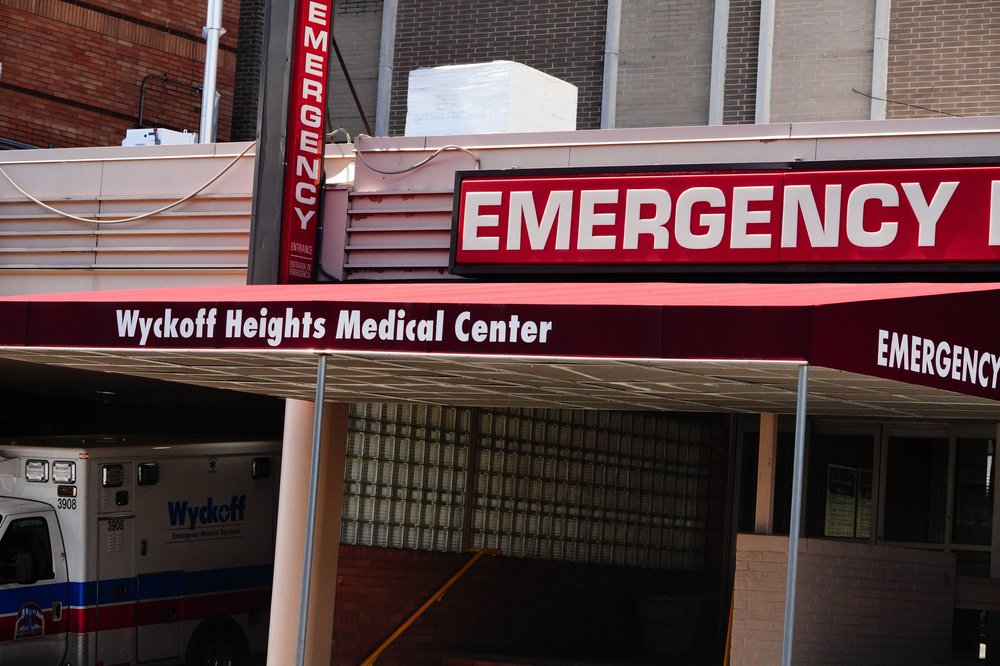Safety-net hospitals lose fight for equal footing in NY health budget compromise
May 2, 2023, 5:01 a.m.
Safety-net hospitals primarily cater to Medicaid patients, and their funding faces perpetual insecurity in annual budget talks.

The New York state budget is slated to include more hospital funding than expected. But as the final details took shape on Monday, advocates said it still fell short of what’s needed for “safety-net” institutions that mostly serve low-income patients and often struggle to stay afloat.
A proposal meant to put these medical facilities on a stronger, long-term footing was left out of the budget compromise this week.
Medicaid, a publicly funded health insurance program for patients with low incomes, typically pays hospitals far less than what they get from commercial insurance. As a result, hospitals that primarily serve Medicaid patients are often on shakier financial ground than ones that cater to private insurance. This pattern contributes to inequities throughout the health system.
In her conceptual budget agreement released Friday, Gov. Kathy Hochul agreed to a 7.5% increase to the rates that Medicaid pays for hospital stays for the coming fiscal year – higher than the initial 5% increase the governor proposed in her executive budget in February. Hochul has been less stringent about controlling Medicaid spending than her predecessor, former Gov. Andrew Cuomo.
“We’re making the largest Medicaid rate increase in two decades, investing in hospitals, nursing homes, assisted living centers, all to stabilize our state’s health care system,” Hochul said Friday in a speech announcing the conceptual agreement.
But hospital groups argue that the increase is largely canceled out by funding cuts that will result from the state’s recent overhaul of Medicaid pharmacy benefits. Those changes will reduce the amount of money hospitals previously received through a federal drug discount program.
The 7.5% boost that Hochul and state lawmakers settled on “falls well short of the minimum 10% increase the heath care community was seeking and sorely needs for many institutions to remain viable,” the Greater New York Hospital Association said in a memo to members Friday.
In her speech on Friday, Hochul said that she was including an additional $500 million in supplemental funding for financially “distressed” hospitals. For hospital reps, this is an improvement over the governor’s initial budget proposal, which provided no new funding. But the Greater New York Hospital Association said this represents a net decrease from the $700 million provided for safety-net hospitals in last year’s budget.
In New York, a major gulf divides the financial health of hospitals serving richer and poorer patients. Most hospitals statewide, 61%, posted operating margins in the black in their 2021 fiscal years, even after expenses related to COVID-19, according to a recent report from the Empire Center, a policy think tank. But there were major disparities. New York-Presbyterian reported an operating surplus of nearly $1.5 billion that fiscal year, while Montefiore Medical Center reported losses of $314 million, according to the report.
Safety-net hospital reps said they are tired of begging for money from the state during each budget cycle to keep their doors open. In March, with the original budget deadline approaching, some state lawmakers began pushing a proposal to boost Medicaid rates for certain safety-net hospitals in a targeted way, rather than just boosting them across the board. It gained support from the New York Safety-Net Hospital Coalition – although the Greater New York Hospital Association did not take a position on the measure.
That proposal did not make it into the health budget legislation released Monday. But Sen. Gustavo Rivera, who also introduced it as a standalone bill in his chamber, said he intended to keep fighting to pass it on its own outside of the budget process.
“These [safety-net hospitals] are the places that have consistently been underfunded because Medicaid rates have been garbage for a long time,” Rivera said. “We are trying to get as much as we can for these institutions.”
Rivera’s Health Equity Stabilization Act would tie Medicaid rates for designated safety-net hospitals to the average commercial insurance rates in the region, putting them on more equal footing. The higher rates would be provided through a program that is eligible for enhanced matching funds from the federal government, so that New York wouldn’t be solely responsible for the funding boost.
Hochul’s office did not respond to a request for comment on that proposal Monday afternoon.
Illegal weed crackdown enters NY budget talks amid late push by Gov. Hochul New Yorkers call on Gov. Hochul to stop radioactive water dumping in Hudson River